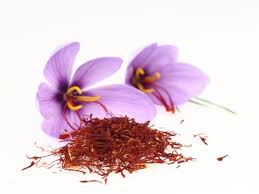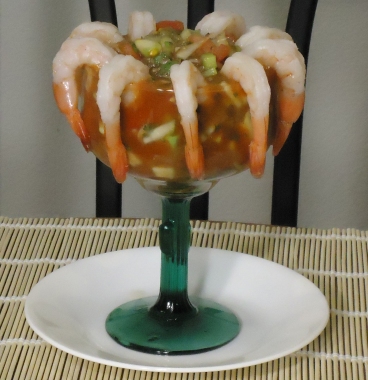
“Let food be thy medicine, and medicine be thy food.”
Those are famous words from the ancient Greek physician Hippocrates, often called the father of Western medicine.
He actually used to prescribe garlic to treat a variety of medical conditions.
Well… modern science has recently confirmed many of these beneficial health effects.
Here are 11 health benefits of garlic that are supported by human research studies.
1. Garlic Contains a Compound Called Allicin, Which Has Potent Medicinal Properties
Garlic is a plant in the Allium (onion) family.
It is closely related to onions, shallots and leeks.
It grows in many parts of the world and is a popular ingredient in cooking due to its strong smell and delicious taste.
However, throughout ancient history, the main use of garlic was for its health and medicinal properties (1).
Its use was well documented by all the major civilizations… including the Egyptians, Babylonians, Greeks, Romans and the Chinese (2).
2. Garlic Is Highly Nutritious, But Has Very Few Calories

Calorie for calorie, garlic is incredibly nutritious.
A 1 ounce (28 grams) serving of garlic contains (3):
- Manganese: 23% of the RDA.
- Vitamin B6: 17% of the RDA.
- Vitamin C: 15% of the RDA.
- Selenium: 6% of the RDA.
- Fiber: 1 gram.
- Decent amounts of Calcium, Copper, Potassium, Phosphorus, Iron and Vitamin B1.
Garlic also contains trace amounts of various other nutrients. In fact, it contains a little bit of almost everything we need.
This is coming with 42 calories, with 1.8 grams of protein and 9 grams of carbs.
Bottom Line: Garlic is low in calories and very rich in Vitamin C, Vitamin B6 and Manganese. It also contains trace amounts of various other nutrients
3. Garlic Can Combat Sickness, Including the Common Cold

Garlic supplementation is known to boost the function of the immune system.
One large 12-week study found that a daily garlic supplement reduced the number of colds by 63% compared with placebo (4).
The average length of cold symptoms was also reduced by 70%, from 5 days in placebo to just 1.5 days in the garlic group.
Another study found that a high dose of garlic extract (2.56 grams per day) can reduce the number of days sick with cold or flu by 61% (5).
If you often get colds, then adding garlic to your diet could be incredibly helpful.
Bottom Line: Garlic supplementation helps to prevent and reduce the severity of common illnesses like the flu and common cold.
4. The Active Compounds in Garlic Can Reduce Blood Pressure
Cardiovascular diseases like heart attacks and strokes are the world’s biggest killers.
High blood pressure, or hypertension, is one of the most important drivers of these diseases.
Human studies have found garlic supplementation to have a significant impact on reducing blood pressure in people with high blood pressure (6, 7, 8).
In one study, aged garlic extract at doses of 600-1,500 mg was just as effective as the drug Atenolol at reducing blood pressure over a 24 week period (9).
Supplement doses must be fairly high to have these desired effects. The amount of allicin needed is equivalent to about four cloves of garlic per day.
Bottom Line: High doses of garlic appear to improve blood pressure of those with known high blood pressure (hypertension). In some instances, supplementation can be as effective as regular medications.
5. Garlic Improves Cholesterol Levels, Which May Lower The Risk of Heart Disease

Garlic can lower Total and LDL cholesterol.
For those with high cholesterol, garlic supplementation appears to reduce total and/or LDL cholesterol by about 10-15% (10, 11, 12).
Looking at LDL (the “bad”) and HDL (the “good”) cholesterol specifically, garlic appears to lower LDL but has no reliable effect on HDL (6, 7, 13, 14, 15).
Garlic does not appear to lower triglyceride levels, another known risk factor for heart disease (10, 12).
Bottom Line: Garlic supplementation seems to reduce total and LDL cholesterol, particularly in those who have high cholesterol. HDL cholesterol and triglycerides do not seem to be affected.
6. Garlic Contains Antioxidants That May Help Prevent Alzheimer’s Disease and Dementia
Oxidative damage from free radicals contributes to the ageing process.
Garlic contains antioxidants that support the body’s protective mechanisms against oxidative damage (16) .
High doses of garlic supplementation have been shown to increase antioxidant enzymes in humans (5, 17), as well as significantly reduce oxidative stress in those with high blood pressure (6).
The combined effects on reducing cholesterol and blood pressure, as well as the antioxidant properties, may help prevent common brain diseases like Alzheimer’s disease and dementia (17, 18).
Bottom Line: Garlic contains antioxidants that protect against cell damage and ageing. It may reduce the risk of Alzheimer’s disease and dementia.
7. Garlic May Help You Live Longer

Effects on longevity are basically impossible to prove in humans.
But given the beneficial effects on important risk factors like blood pressure, it makes sense that garlic could help you live longer.
The fact that it can fight infectious disease is also an important factor, because these are common causes of death, especially in the elderly or people with dysfunctional immune systems.
Bottom Line: Garlic has known beneficial effects on common causes of chronic disease, so it makes perfect sense that it could help you live longer.
8. Athletic Performance Can be Improved With Garlic Supplementation

Garlic was one of the earliest “performance enhancing” substances.
It was traditionally used in ancient cultures to reduce fatigue and enhance the work capacity of labourers.
Most notably, it was administered to Olympic athletes in ancient Greece (19).
Rodent studies have shown that garlic helps with exercise performance, but very few human studies have been done.
Subjects with heart disease that took garlic oil for 6 weeks had a reduction in peak heart rate of 12% and improved their exercise capacity (20).
However, a study on nine competitive cyclists found no performance benefits (21).
Other studies suggest that exercise-induced fatigue may be reduced with garlic (2).
Bottom Line: Garlic can improve physical performance in lab animals and people with heart disease. Benefits in healthy people are not yet conclusive.
9. Eating Garlic Can Help Detoxify Heavy Metals in the Body
At high doses, the sulfur compounds in garlic have been shown to protect against organ damage from heavy metal toxicity.
A four week study in employees of a car battery plant (excessive exposure to lead) found that garlic reduced lead levels in the blood by 19%. It also reduced many clinical signs of toxicity, including headaches and blood pressure (22).
Three doses of garlic each day even outperformed the drug D-penicillamine in symptom reduction.
Bottom Line: Garlic was shown to significantly reduce lead toxicity and related symptoms in one study.
10. Garlic May Improve Bone Health

No human trials have measured the effects of garlic on bone loss.
However, rodent studies have shown that it can minimise bone loss by increasing estrogen in females (23, 24, 25, 26).
One study in menopausal women found that a daily dose of dry garlic extract (equal to 2 grams of raw garlic) significantly decreased a marker of estrogen deficiency (27).
This suggests that this garlic may have beneficial effects on bone health in women.
Foods like garlic and onions have also been shown to have beneficial effects on osteoarthritis (28).
Bottom Line: Garlic appears to have some benefits for bone health by increasing estrogen levels in females, but more human studies are needed.
11. Garlic Is Easy to Include In Your Diet and Tastes Absolutely Delicious
The last one is not a health benefit, but still important.
It is the fact that it is very easy (and delicious) to include garlic in your current diet.
It complements most savory dishes, particularly soups and sauces. The strong taste of garlic can also add a punch to otherwise bland recipes.
Garlic comes in several forms, from whole cloves and smooth pastes to powders and supplements like garlic extract and garlic oil.
The minimum effective dose for therapeutic effects is one clove eaten with meals, two or three times a day.
However, keep in mind that there are some downsides to garlic, such as bad breath. There are also some people who are allergic to it.
If you have a bleeding disorder or are taking blood thinning medications, then talk to your doctor before increasing your garlic consumption.
The active compound allicin only forms when garlic is crushed or cleaved when it is raw. If you cook it before crushing it, then it won’t have the same health effects.
Therefore, the best way to consume garlic is raw, or to crush and cut it and leave it out for a while before you add it to your recipes.
My favorite way to use garlic is to press a few cloves of fresh garlic with a garlic press, then mix with extra virgin olive oil and a bit of salt. This a healthy and super satisfying dressing.
11. Garlic Is Easy to Include In Your Diet and Tastes Absolutely Delicious

The last one is not a health benefit, but still important.
It is the fact that it is very easy (and delicious) to include garlic in your current diet.
It complements most savory dishes, particularly soups and sauces. The strong taste of garlic can also add a punch to otherwise bland recipes.
Garlic comes in several forms, from whole cloves and smooth pastes to powders and supplements like garlic extract and garlic oil.
The minimum effective dose for therapeutic effects is one clove eaten with meals, two or three times a day.
However, keep in mind that there are some downsides to garlic, such as bad breath. There are also some people who are allergic to it.
If you have a bleeding disorder or are taking blood thinning medications, then talk to your doctor before increasing your garlic consumption.
The active compound allicin only forms when garlic is crushed or cleaved when it is raw. If you cook it before crushing it, then it won’t have the same health effects.
Therefore, the best way to consume garlic is raw, or to crush and cut it and leave it out for a while before you add it to your recipes.
My favorite way to use garlic is to press a few cloves of fresh garlic with a garlic press, then mix with extra virgin olive oil and a bit of salt. This a healthy and super satisfying dressing.
November, 2015
|



 Starting Tomorrow! 14 Daily Heart Healthy Recipes
Starting Tomorrow! 14 Daily Heart Healthy Recipes








